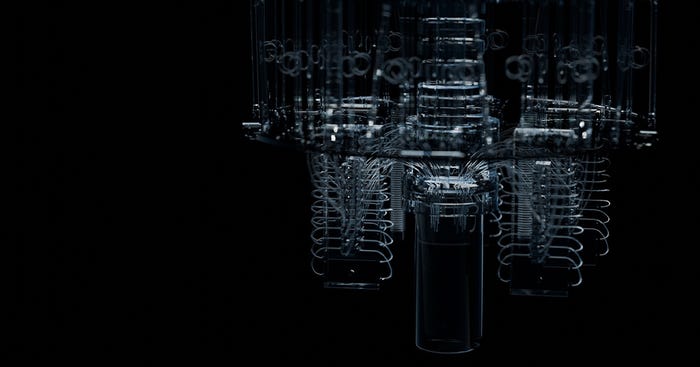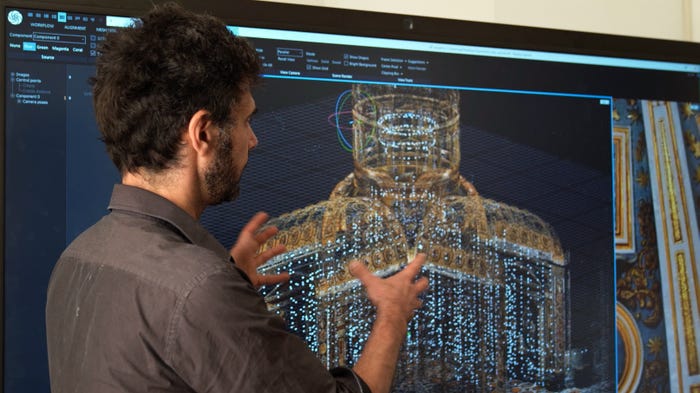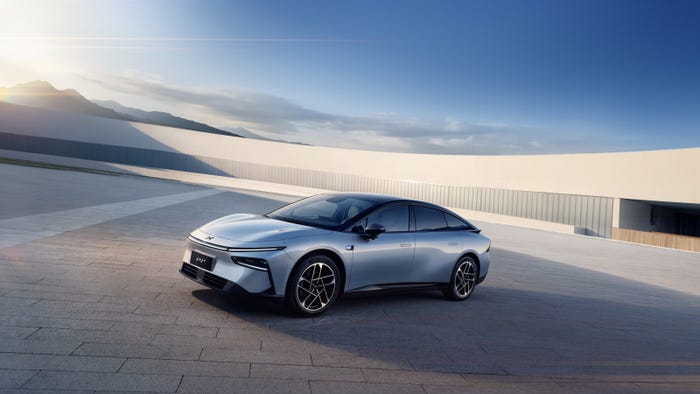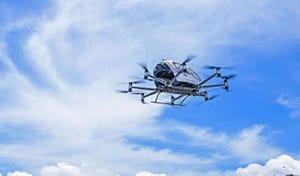Microsoft, Otis Partner to Make Elevators Smarter
Otis president Philippe Delpech and Microsoft CEO Satya Nadella talked about elevators and tech, and fielded questions on how digital products should make elevators smarter.
April 25, 2016

By Matt LaWell
HANNOVER, Germany — The Otis Elevator Company maintains more than 2 million lifts around the world, some of them old, most of them new, more and more of them now connected.
Otis, a subsidiary of United Technologies, formally announced an expanded relationship with Microsoft on Sunday morning at the 70th annual Hannover Messe industrial show. Otis president Philippe Delpech and Microsoft CEO Satya Nadella tucked into a small meeting room, talked about elevators and tech, and fielded a handful of questions about how Azure cloud, Cortana analytics and other digital products should make elevators smarter.
“I think of what Philippe and Otis are doing now not just as using our technology, but creating their own technology,” Nadella said. “That’s where this partnership is very exciting. They’re using our digital platforms to create their own digital platforms and their own digital products. The elevator itself is a digital product going forward. Every elevator is going to be connected. Every elevator is going to have predictive and analytic capability.
“It’s going to become part of the business model.”
If you work in a factory, your elevator might travel a couple floors, if you have one at all. If you work in an office building, you might climb a couple dozen floors every day, preferably on the express rather than the local. But there are plenty of elevators — Otis maintains about 2 million around the world, which transport an estimated 2 billion people every day — that do far more.
Take the Burj Khalifa, for example. Otis installed and operates all 57 of the elevators used in the world’s tallest building, including the one situated in the spire 2,722 feet atop Dubai. It operates the elevators that travel the longest distance there, as well, at 1,654 feet. Some of them travel faster than 22 mph. All impressive numbers, sure, but elevators that cranked up eight floors were once impressive, too.
“The way we maintain the machine will influence the way we design the machine to facilitate and go to the next level,” Delpech said. “I think the elevator of the future will be connected, and it will have a lot of embedded intelligence.”
Delpech said the company plans to use internal productivity apps that are currently in development by field teams, as well as a global CRM system that will digitally link the company’s operations in the more than 200 countries and territories where it maintains at least one elevator.
“It’s not the usual digital announcement,” Delpech said. “It’s really a strategy move for us. … The data we collect and analyze will give us a totally different perspective of the industry.”
Nadella, meanwhile, sounded more impressed with Otis’s development of its own technology in conjunction with using Microsoft’s.
“What’s interesting about this era is that, for the first time, the digital feedback loop — from how these things operate in the field to how they will improve continuously — is software-driven,” Nadella said. “That’s what I describe as these systems of intelligence. The fact that all these elevators are connected all the time, the fact that the data coming from these elevators is being correlated with all the other information available around it, and is being used to improve its performance — that digital feedback loop is another capability on top of all the electrical, mechanical, safety.”
In theory, Microsoft will provide the tools, Otis will develop new tools, and the innovation cycle will increase. Right now, Otis aims to double to the quality and performance of its product cycle every three or four years. Delpech thinks that number can be trimmed with smart elevators.
The sky is, proverbially, the limit for the technology — though right now it still tops out around the 160th floor.
This article originally appeared on IndustryWeek.
You May Also Like





.jpg?width=300&auto=webp&quality=80&disable=upscale)
